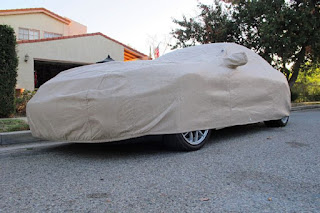Why Is Tuning Your Stereo Important?
Tuning your stereo makes a difference in sound. The difference is between okay sound quality and amazing sound.Since you already put in the time and effort to upgrade your car stereo system, you may as well make the most of the new stereo and tune it up to its potential.
How Do Equalizers Work?
When set properly, your equalizer for car audio system can bring the best sound out of your car stereo system.Tuning the EQ improves your stereo’s sound reproduction by removing large peaks and dips between frequencies that create harsh, unpleasant sounds.Basic EQs only have 3 bands of frequencies to work with, whereas more complex EQs may include 13 or more bands.For example, a 3-band EQ represents 3 divisions of frequency for treble, mid, and bass tones.
Bass frequencies are generally between 60 to 120 hertz, mids between 400 to 2,500 hertz, and treble between 8,000 to 15,000 hertz.EQs with more bands offer a finer division of frequency groups.13 instead of 3 divisions of frequency. This provides greater control over your stereo’s sound.
How Do I Set Up My EQ?
To set up your EQ, you need a real-time analyzer tool to measure the sound in your car. You can easily download an RTA app on your smart phone. You’ll also need a pink noise generator, which many RTA apps include in their software.Pink noise is the equal output of a wide range of frequencies, usually from around 20 hertz to 20,000 hertz. Play pink noise through your car stereo while running the RTA app, which will display a graph of frequencies. Because you’re analyzing pink noise, you shouldn’t have any significant gaps between each frequency, barring a gentle curve.
At most, you want a 3-dB difference between each, with the 32hz frequencies on the higher end of a curve, a mostly-level 120 to 4,000hz, and a gentle dip down between 8,000 and 16,000hz.Check the corresponding frequencies on your EQ and make some adjustments. If you’ve got a multi-band EQ, this could mean some balancing and tweaking until you get an even reading on your RTA graph.
EQs can be trickier because each control handles a larger range of frequencies. Adjusting external factors subwoofer placement, gain, crossover, or bass boost on aftermarket amps is a great place to start, but you will likely still need some fine-tuning.
If you still have gaps, select the control bass, mid, treble/highs closest to the frequency that needs adjusting and narrow the bandwidth. Even a basic head unit’s menu should give you an option to select the center frequency. This is the frequency your adjustment range centers on.Try adjusting your EQ again to balance things out a bit more. 3-band EQs are trickier, but with some patience, you can tune out harsh frequencies and smooth out your sound.
How Do Equalizers Work?
When set properly, your equalizer for car audio system can bring the best sound out of your car stereo system.Tuning the EQ improves your stereo’s sound reproduction by removing large peaks and dips between frequencies that create harsh, unpleasant sounds.Basic EQs only have 3 bands of frequencies to work with, whereas more complex EQs may include 13 or more bands.For example, a 3-band EQ represents 3 divisions of frequency for treble, mid, and bass tones.
Bass frequencies are generally between 60 to 120 hertz, mids between 400 to 2,500 hertz, and treble between 8,000 to 15,000 hertz.EQs with more bands offer a finer division of frequency groups.13 instead of 3 divisions of frequency. This provides greater control over your stereo’s sound.
How Do I Set Up My EQ?
To set up your EQ, you need a real-time analyzer tool to measure the sound in your car. You can easily download an RTA app on your smart phone. You’ll also need a pink noise generator, which many RTA apps include in their software.Pink noise is the equal output of a wide range of frequencies, usually from around 20 hertz to 20,000 hertz. Play pink noise through your car stereo while running the RTA app, which will display a graph of frequencies. Because you’re analyzing pink noise, you shouldn’t have any significant gaps between each frequency, barring a gentle curve.
At most, you want a 3-dB difference between each, with the 32hz frequencies on the higher end of a curve, a mostly-level 120 to 4,000hz, and a gentle dip down between 8,000 and 16,000hz.Check the corresponding frequencies on your EQ and make some adjustments. If you’ve got a multi-band EQ, this could mean some balancing and tweaking until you get an even reading on your RTA graph.
EQs can be trickier because each control handles a larger range of frequencies. Adjusting external factors subwoofer placement, gain, crossover, or bass boost on aftermarket amps is a great place to start, but you will likely still need some fine-tuning.
If you still have gaps, select the control bass, mid, treble/highs closest to the frequency that needs adjusting and narrow the bandwidth. Even a basic head unit’s menu should give you an option to select the center frequency. This is the frequency your adjustment range centers on.Try adjusting your EQ again to balance things out a bit more. 3-band EQs are trickier, but with some patience, you can tune out harsh frequencies and smooth out your sound.




Comments
Post a Comment